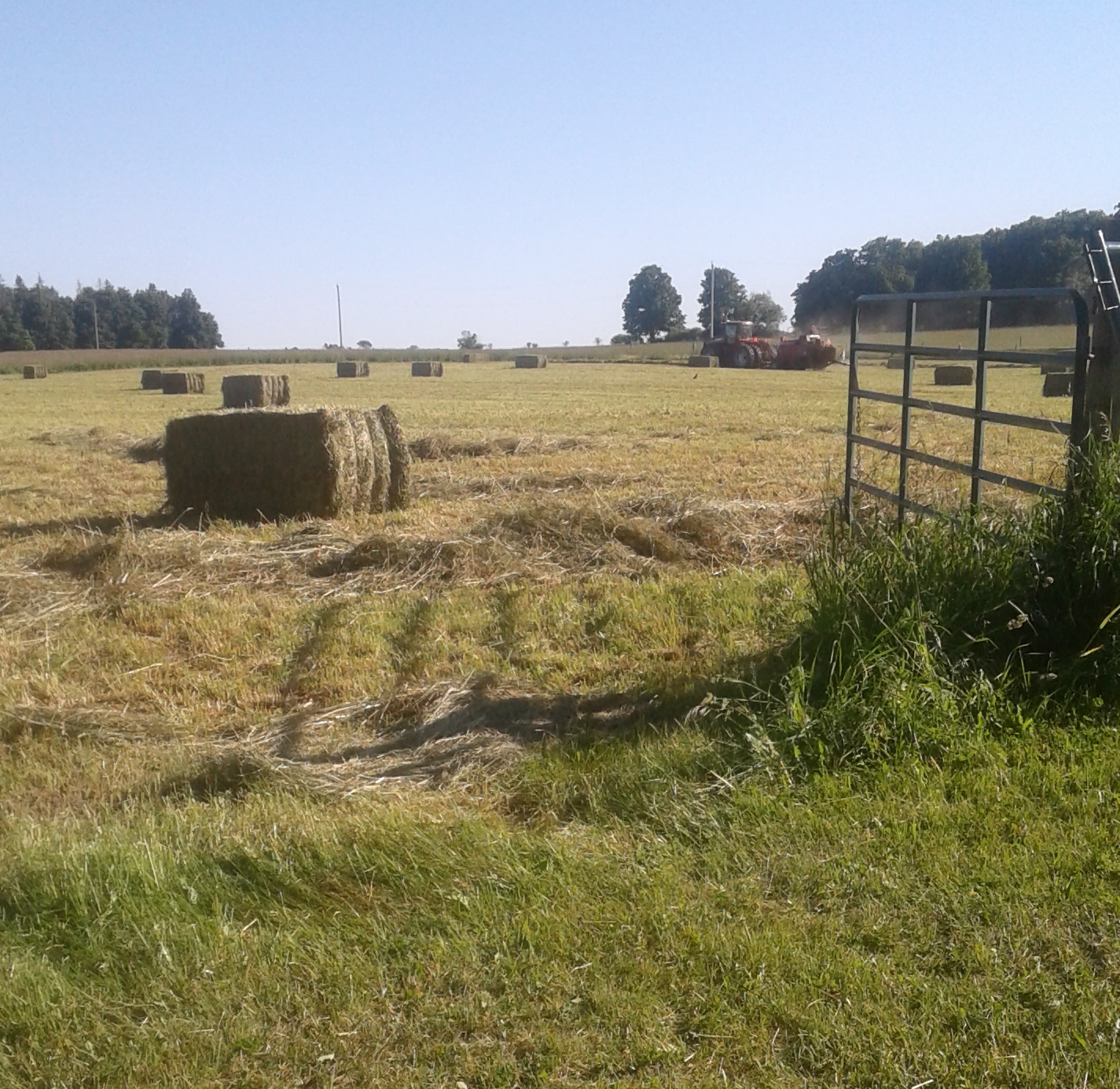
Forage production differs from grain and oilseed production in that the crop is not grown to full maturity. This difference often influences agronomy and other management decisions, which in turn affect yield and quality. Some resources on forage crop agronomy, harvest, and storage can be found here.
General Resources
Agronomy Guide for Field Crops
OMAFRA Publication 811: Agronomy Guide for Field Crops is a comprehensive guide to field crop production. Chapter 3: Forages covers hay and haylage production, with an emphasis on alfalfa crops (available for download below). Chapter 15: Insects and Pests of Field Crops and Chapter 16: Diseases of Field Crops are useful for scouting and managing common alfalfa pests in Ontario. Other chapters provide information on soil management, soil fertility, and scouting.
Aussi disponible en français.
Guide to Forage Production
OMAFRA Publication 30: Guide to Forage Production is a comprehensive guide to forage agronomy. It has information on establishment, fertility, weed management and weather stress for many species grown as forage in Ontario. It also covers harvest and storage of forage crops and understanding a laboratory forage analysis.
Species Selection
Forage U-Pick
Forage U-Pick is an interactive perennial forage species selection tool for Canada. Choose the growing zone where your farm based on the map, then select up to three Field Characteristics that are most important to your production system. Forage U-Pick will filter possible species to only show you those best suited to your field. Take the short list to your seed supplier to get a custom blend that really sings.
Aussi disponible en français.
Midwest Cover Crop Council Cover Crop Decision Tools
The Midwest Cover Crop Council (MCCC) Cover Crop Decision Tools are web-based systems to assist farmers in selecting cover crops to include in field crop and vegetable rotations. Selecting “Mechanical Forage Harvest Value” or “Good Grazing” as cover crop goals will rank the annual crops in the database on their suitability as forage crops.
Forage Variety Trial Data
The Ontario Forage Crops Committee was active from 1953 to 2015. Variety trial results from their work are archived here. For more recent independent variety trial work, producers must rely on data from other jurisdictions.
- (U.S.) National Alfalfa and Forage Alliance – Alfalfa Variety Ratings
- University of Minnesota Forage Variety Trials
- University of Wisconsin Team Forage Variety Trial Results
- Michigan State University Forage and Cover Crop Variety Testing
- Ohio State University Crop Performance Trials
- (Pennsylvania) PennState Extension Forage Variety Trial Reports
- (New York) Cornell University Forage Yield Trials
Crop Nutrient Management
AgriSuite
The AgriSuite tools can help you determine the best way to store, treat and use materials containing crop nutrients — such as manure — on your farm. Available tools include:
- The Crop Nutrient Decision Support Tool provides crop nutrient recommendations (N-P-K), based on soil test values, location, and yield goals.
- The Organic Amendment Decision Support Tool helps determine crop nutrients supplied from manure.
- The Fertilizer Decision Support Tool determines the total commercial fertilizer needs for a single field.
- The Phosphorus Loss Assessment Tool for Ontario (PLATO) determines the risk of phosphorus leaving a farm by considering the field’s natural characteristics and the management practices used in crop production.
- The Manure Storage Sizing Tool helps plan the infrastructure needed to store all nutrient-rich materials generated on farms.
- The Greenhouse Gas Decision Support Tool estimates greenhouse gas emissions from crop and livestock farms and allows users to test possible ways to reduce emissions and sequester carbon by implementing various beneficial management practices.
Pest Management
Ontario Crop Protection Hub
The Ontario Crop Protection Hub is OMAFRA’s official crop protection resource. It replaces Publication 75: Guide to Weed Control and Publication 812: Field Crop Protection Guide. The Crop Protection Hub is an online database with the latest information on pesticides (herbicides, insecticides, and fungicides) labelled for use in Ontario.
Aussi disponible en français.
Harvest
NUTRI-fourrager
NUTRI-fourrager predicts the optimum harvest date for alfalfa-grass mixtures based on plant height and target NDF and RFV. The tool is only available in French, but web browser translations make it usable in English. Note that “valeur alimentaire relative (VAR)” is Relative Feed Value (RFV).
Seulement disponible en français.
